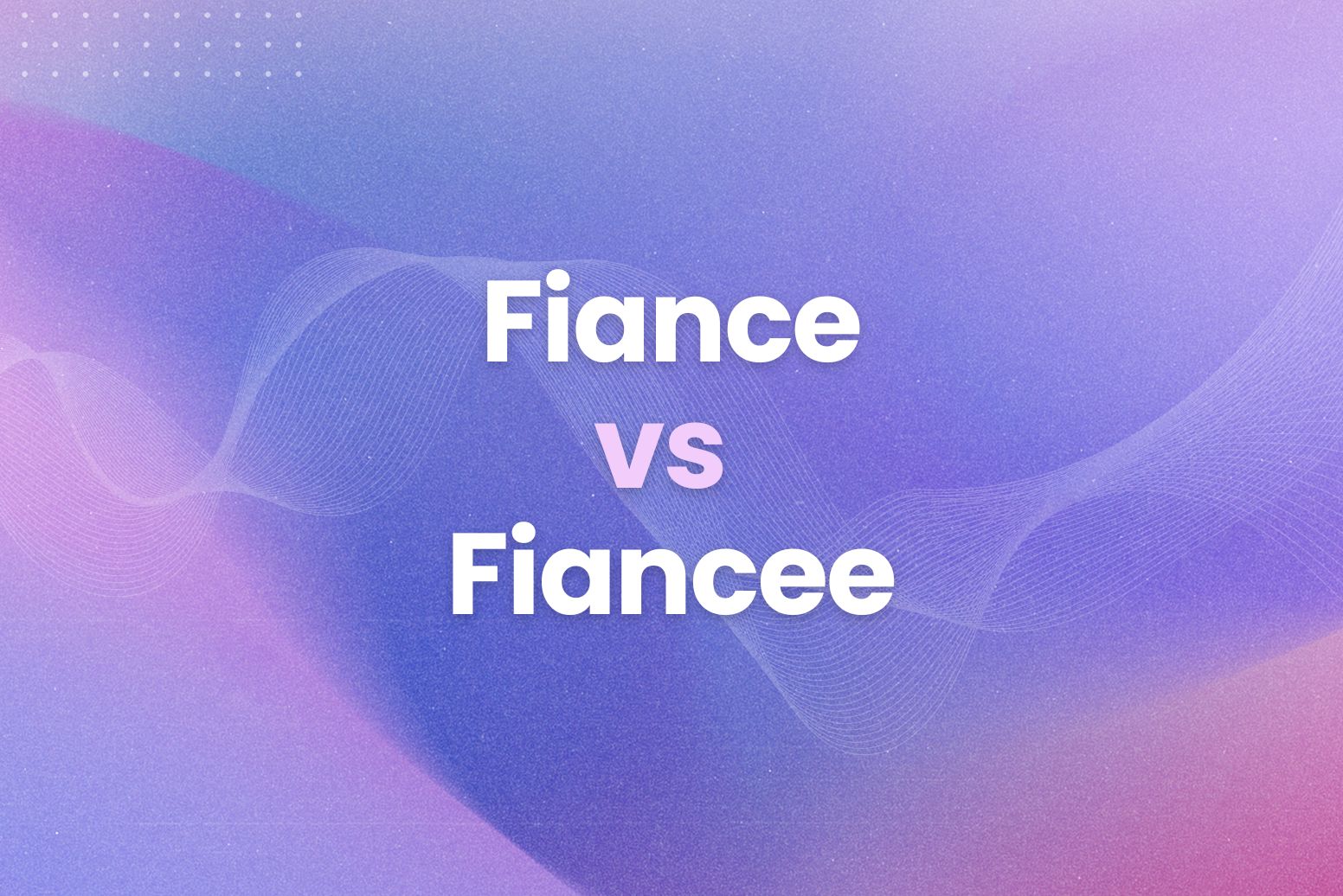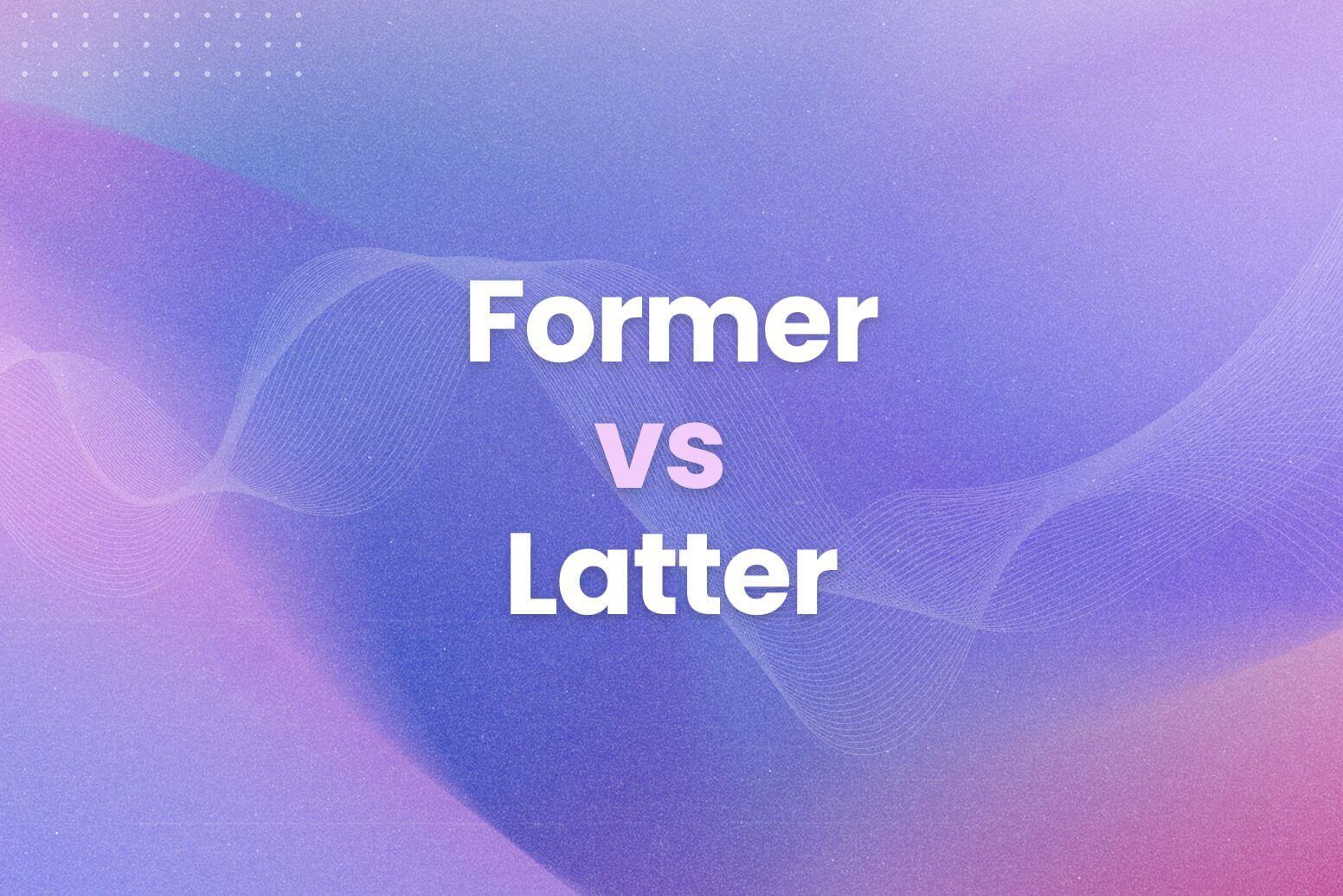Planning a wedding is stressful enough. But spelling your future spouse’s title shouldn’t add to the chaos. One tiny letter can make all the difference. It’s a common slip-up, but we’re here to help you nail it. This guide clarifies the difference between “fiance vs fiancee” once and for all. In short, we’ll cover:
- The difference between fiance vs fiancee.
- Easy memory tricks to remember which is which.
- How to confidently use each word in a sentence.
- The etymology of the words.
This way, you can focus on more important wedding details. And less on grammar anxieties. For instance, imagine sending out invitations with the wrong spelling. That would certainly be a faux pas. Moreover, accurate grammar reflects attention to detail. So, getting this right matters.
The Difference Between Fiance vs Fiancee
These words look almost identical. But they have very different meanings. Specifically, gender determines which word you use. In short, “fiance” refers to a male engaged person. Conversely, “fiancee” refers to a female engaged person. For example, “My fiance, John, is planning the honeymoon.” On the other hand, “My fiancee, Sarah, picked out her dress.”
It’s a small difference. However, it’s a crucial one. Using the wrong word can cause confusion. Or worse, embarrassment. Above all, we want to avoid that. Therefore, remembering this simple rule is important.
- Fiance: Male
- Fiancee: Female
This distinction comes from French. Consequently, many English speakers find it tricky. But don’t worry. We have memory tricks coming up. These will help you remember. In addition, using a grammar checker can help.
Arvin, our AI-powered browser extension, is perfect for this. It uses GPT-4. Therefore, it catches even the trickiest grammar errors—like fiance vs. fiancee. This way, you can write with confidence. And focus on other wedding details. For instance, you can use Arvin on your wedding website or invitations. This will ensure everything is grammatically correct.
Furthermore, using the right word shows respect. It shows you care about the details. That is to say, it demonstrates professionalism and care for the language. Thus, it’s always better to be correct.
Easy Memory Tricks to Remember Which Is Which
So, how do you keep these straight? We have a few simple tricks. These are designed to make it easy to remember. Firstly, let’s focus on the endings.
- Fiance: Ends in one “e”. Think: He.
- Fiancee: Ends in two “e’s”. Think: She.
This is the most common and effective trick. In other words, the extra “e” signifies the feminine form. For instance, “employee” and “employeee” do not exist. But similar logic applies to other French-derived words like “blonde” (female) and “blond” (male).
Secondly, think of famous couples. For example, Prince William is Kate Middleton’s fiance. Kate Middleton is Prince William’s fiancee. This real-world example reinforces the gender association.
Thirdly, try this silly sentence: “He is my fiance, so I get a free cup of coffee.” The word “free” helps you remember the one “e” in fiance. This method uses association. Therefore, it can be very effective.
How to Confidently Use Each Word in a Sentence
Now that you know the difference, let’s see these words in action. This section will show you exactly how to use them. Firstly, let’s look at examples with “fiance” (male):
- “My fiance, David, proposed on a beach in Hawaii.”
- “She introduced me to her fiance at the family dinner.”
- “He is excited to finally call her his fiance.”
Notice how “fiance” always refers to a male person. Secondly, let’s look at examples with “fiancee” (female):
- “My fiancee, Emily, has already picked out her wedding dress.”
- “He can’t wait to marry his fiancee next summer.”
- “The bride-to-be, his fiancee, looked radiant.”
Again, “fiancee” always refers to a female person. Furthermore, context is key. That is to say, the surrounding words usually make it clear who you’re talking about. For example, using pronouns like “he” or “she” helps.
Moreover, if you’re writing a formal document, accuracy is essential. For instance, wedding invitations, legal documents, or a website copy should be perfect. So, consider using Arvin to double-check. Arvin catches subtle errors. Therefore, it’s a valuable tool. As a result, you can be completely confident in your writing. In short, Arvin can be your personal grammar expert.
The Etymology of the Words (Fiance vs Fiancee)
Ever wonder where these words actually come from? This section dives into the fascinating history. Firstly, both “fiance” and “fiancee” originate from the French verb fiancer. This verb means “to betroth” or “to promise in marriage.” In short, it’s about making a formal promise.
The different endings reflect French grammatical gender. Consequently, French nouns have masculine and feminine forms. As a result, this distinction carried over into English. For instance, many other English words have French roots. Therefore, this concept isn’t completely foreign.
Understanding the etymology can actually help you remember the difference. That is to say, knowing the origin gives the words more meaning.
Lastly, language evolves. Consequently, some people argue that the gendered distinction is becoming less important. However, in formal writing, the distinction is still very important. Therefore, it’s best to use the correct forms. As a result, you’ll avoid any potential criticism.
Ready to Nail Your Nuptial Naming with Arvin?
The difference between fiance and fiancee is simple: gender. Using these words correctly shows attention to detail. This is especially important for wedding-related communication.
In short, remember these key points on fiance vs fiancee:
- Fiance (one “e”) refers to a male.
- Fiancee (two “e’s”) refers to a female.
- Memory tricks like “He/She” can help.
- Context is key for clear communication.
Planning a wedding involves countless details. From invitations to thank-you notes, grammar matters. Therefore, Arvin can be your perfect AI writing tool. It ensures your writing is always correct. Consequently, you can focus on celebrating your love. In short, let Arvin handle the grammar. And you handle the happily ever after.
Frequently Asked Questions (FAQs)
Is my girlfriend fiancé or fiancée?
Your girlfriend is your fiancee. Remember, the double “e” indicates the female form. So, if you’re a man referring to the woman you’re engaged to, she is your fiancee. Similarly, if you’re a woman referring to the woman you’re engaged to, she is also your fiancee. For instance, “My fiancee and I are planning our honeymoon.”
Do I call my boyfriend fiancé or fiancée?
You call your boyfriend your fiance. The single “e” designates the male form. This applies whether you are a man or a woman. For example, “My fiance proposed last week.”
What is fiancé for a female?
The correct term for a female engaged person is fiancee. The extra “e” marks the feminine form. Therefore, fiance is never used for a female. For example, “She is my fiancee.”
Is fiancé still a girlfriend?
No. Once you are engaged, your girlfriend becomes your fiancee. Consequently, the term “girlfriend” is no longer accurate. The engagement signifies a formal commitment. Therefore, the term changes. Similarly, a boyfriend becomes a fiance after an engagement.








